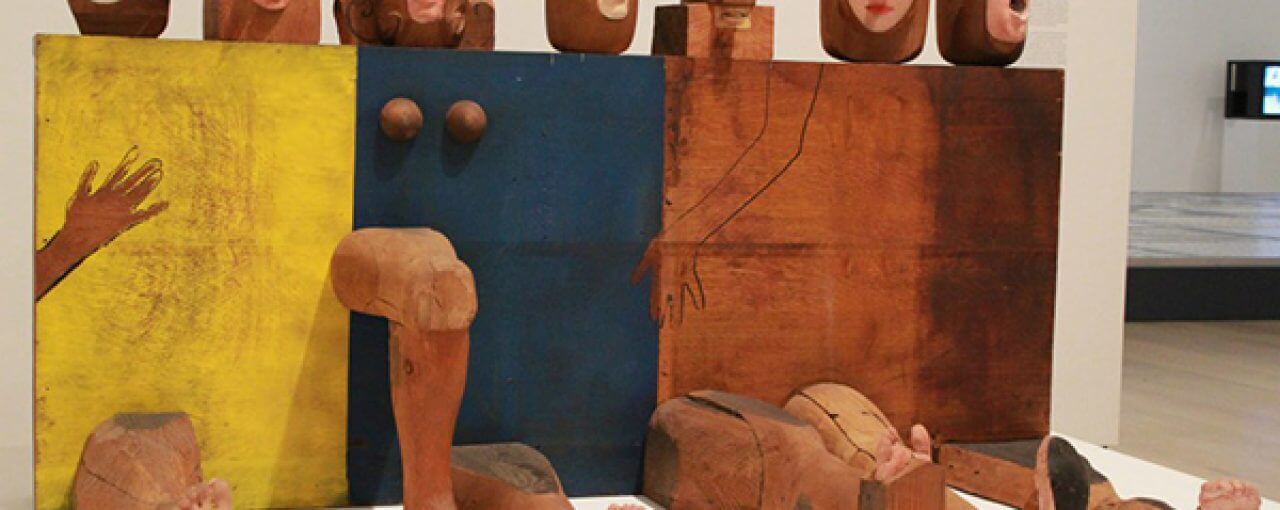Summer 2018 Highlights
By John S. Berman, WTP Art Correspondent
Four times a year, WTP art correspondents from around the country will report back on the previous season, with images from exhibitions you otherwise might have missed, and their own insights into these varied venues.
It’s been quite a year for the Brooklyn Museum. The monumental and dazzling David Bowie is show generated as much buzz as any installation in New York City in many years, as well as deserved laudatory reviews. But the institution didn’t stop there when it came to mounting blockbuster exhibits. Always ahead of the rest of the art world when it comes to showcasing the work of underrepresented artists, the spring and summer exhibition: Radical Women: Latin American Artists 1960–1985 still represents an exceedingly ambitious undertaking.
Curated by Cecilia Fajardo-Hill and Andrea Giunta, the show—which originated at the Hammer Museum in Los Angeles and took a staggering eight years to complete—featured 120 painters, sculptors, photographers, and video artists representing fifteen countries from Central and South America and the Dominican Republic and Puerto Rico, as well as Latina and Chicana artists from within the United States. Not surprisingly, there are many challenges in curating a survey this large, and across a twenty-five year time span. Most notably of challenges, perhaps the question of how one defines “radical”: does the work need to be explicitly political or oppositional to be included in the show? In addition, there are always risks in reducing the importance of regional or geographic differences into one overarching narrative.
Fajardo-Hill and Giunta are to be commended for carefully balancing the unique statement of the individual artist within the context of her historical setting, with the documenting of shared themes and struggles that crossed national boundaries during this pivotal period of resistance and repression in many of these countries. The curators were also careful not to privilege the overtly “political” or works that have an explicitly feminist bent, over more nuanced, satirical, and introspective works. The exhibit, in fact, includes “feminisms” as one of its nine categories, along with self-portrait, social places, feminisms, resistance and fear, mapping the body, the erotic, the power of words, body landscape, and performing the body, although much of the work could easily move between any of these themes.
In a show this large, containing over 280 works, it can be difficult to highlight individual pieces for special attention. Nevertheless, several works struck me as particularly noteworthy. Uruguayan artist Nelbia Romero’s installation from 1983, “Sal-si-Puedes,” featured a huge labyrinth with demolished plastic mannequins. Playing in the background were terrifying jungle sounds referencing the terror inflicted by the country’s dictatorship which ruled from 1973 to 1985. In contrast, Mexican artists Mónica Mayer and Maris Bustamante’s collaboration, “Madre por un dia” (Mother for a day) used humor to challenge workplace discrimination faced by expectant mothers in their country, by inviting a male television host to wear a pregnancy belly.
One of the oldest pieces in the exhibition is from 1961 and by Venezuelan artist Marisol (she used only her first name), an impressive wooden sculpture titled “Self Portrait,” revealing the vulnerability of the human subject, with each body part carefully rendered.
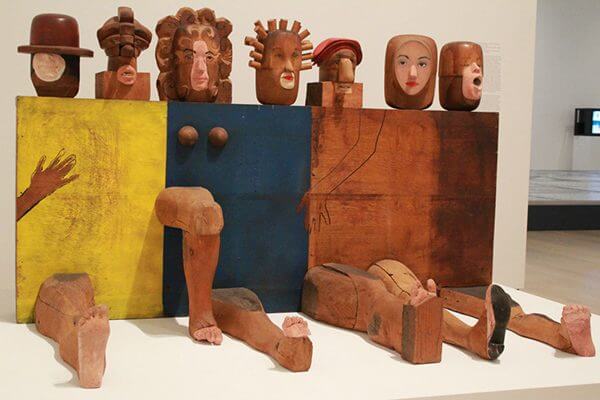
Argentinian Margarita Paksa’s “Silencio II” (Silence II), originally created in 1967 and then updated in 2010, makes a different kind but no less powerful statement, using a small, empty plexiglass box to show how repression silences its opponents and often goes unrecognized by the general public.
Although many of the artists featured in the show, including Lygia Pape, Cecilia Vicuña, Ana Mendieta, and Beatriz González, have become prominent in recent years, the exhibition also included important works by less well-known women such as Zilia Sánchez (Cuba), Feliza Bursztyn (Colombia), and Letícia Parente (Brazil). US-born Chicana muralist Judith Baca also added her own unique perspective to the collection. The show was particularly strong in showcasing photography of marginalized communities, perhaps rendered most powerfully by Chilean Paz Errázuriz’s series documenting transvestites from a Santiago brothel, and Claudia Andujar’s photographs of the indigenous Yanomamis of the Brazilian rainforest as part of their struggle to promote a vaccination campaign in the 1970s and ’80s.
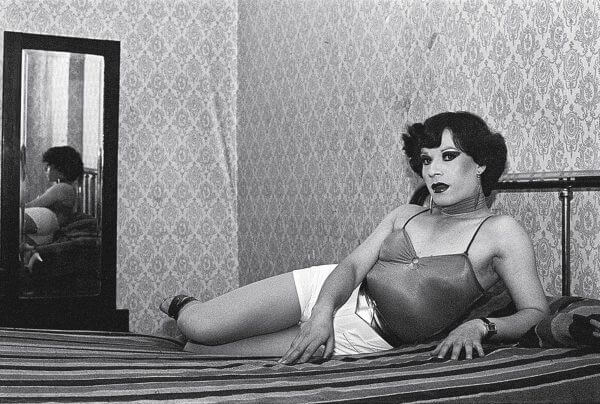
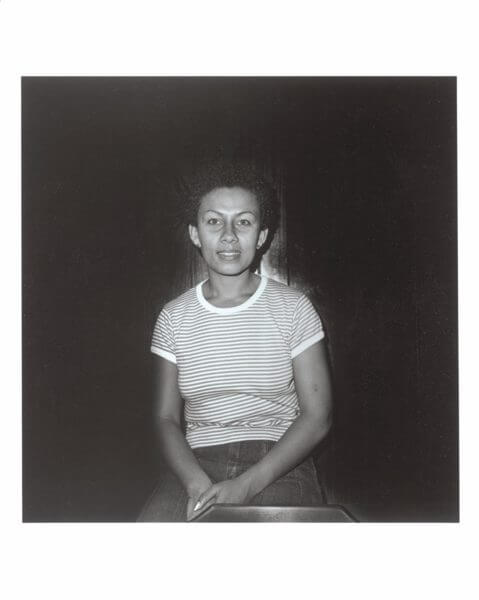
In transferring Radical Women from Los Angeles to the Brooklyn Museum, the curators added several NYC-based artists, including Marta Moreno Vega, whose evocative self-portrait made from wood resembles a life-size paper doll.
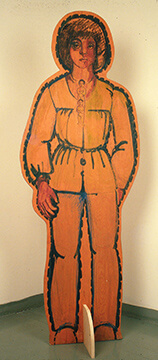
In addition, her work was juxtaposed against photographs from the series Nuyorican Portraits by Sophie Rivera, which captured random individuals and families on New York City streets. Ester Hernández’s painting, “Sun Mad Raisins” from 1982, parodied the Sun Maid raisins box substituting a skeleton woman with the words, “Unnaturally Grown” to graphically illuminate the pesticides ingested by Mexican workers, including members of Hernandez’s own family, in growing these raisins.
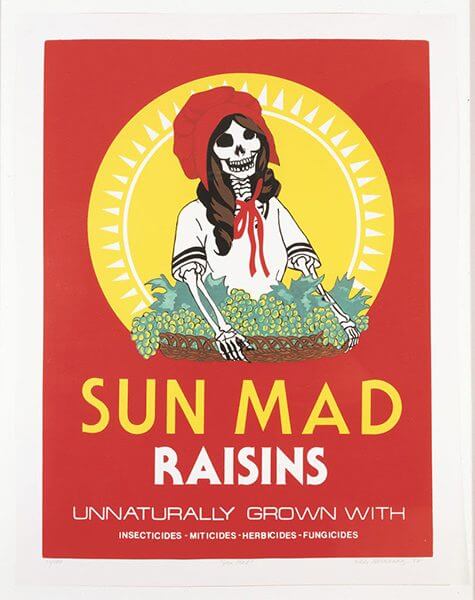
Radical Women: Latin American Art 1960–1985 is an extraordinarily rich show that breaks new ground and creates rich opportunities for further study. Fortunately, it continues to travel throughout the region starting with São Paulo, Brazil, where it will be shown until the end of the fall.
If you are interested in becoming an art correspondent for WTP, please inquire at wtp@thewoventalepress.net
Copyright 2018 Woven Tale Press LLC. All Rights Reserved.

